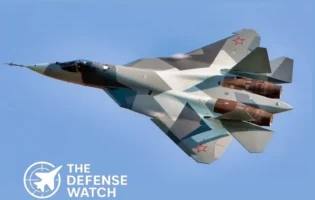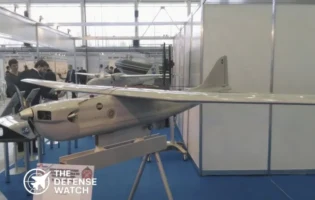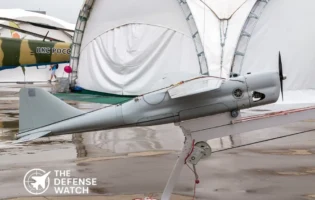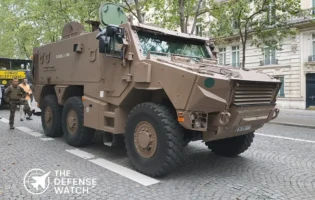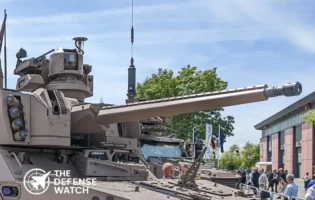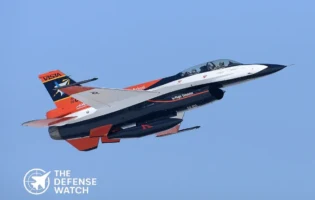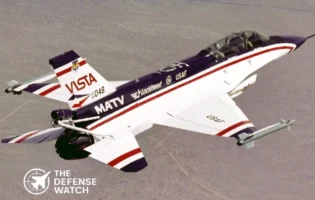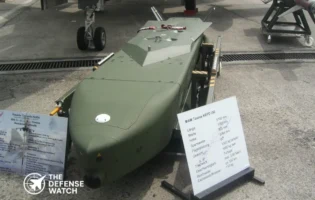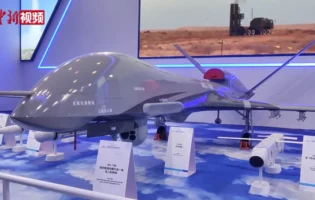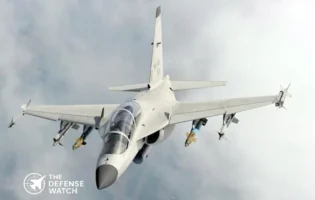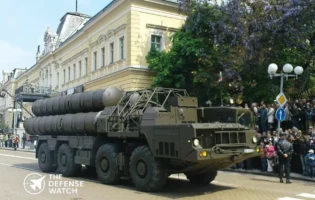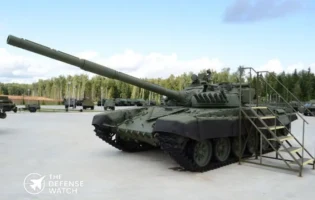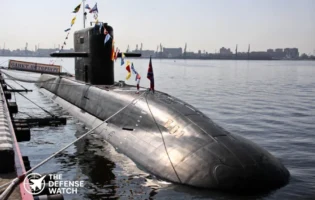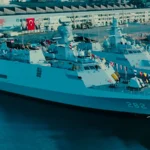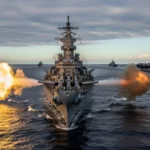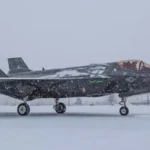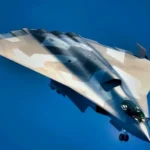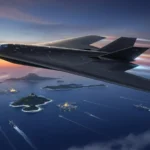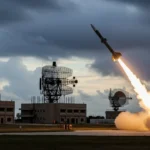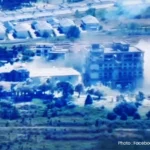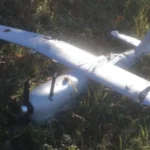- Home
- Catalog
- Fighter Jets
- Su-30 Fighter Jet
Su-30 Fighter Jet


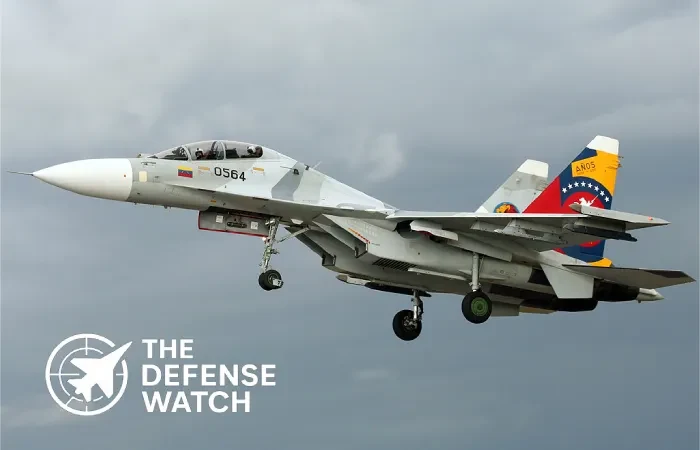
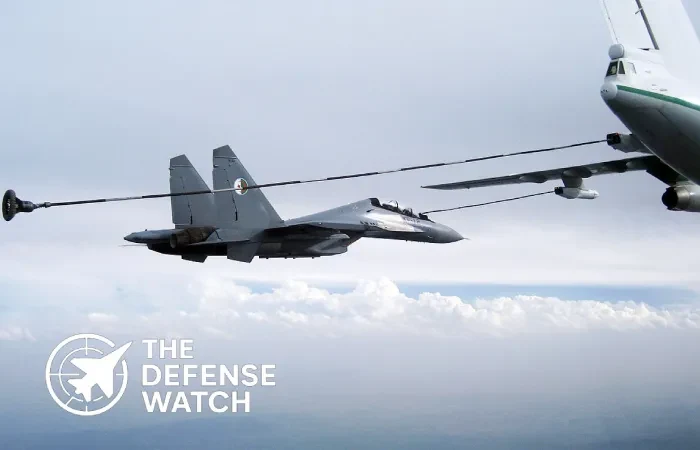

Full Specifications
General Information
| Name | Su-30 Fighter Jet |
| Manufacturer | Sukhoi Design Bureau |
| Country of Origin | Russia |
| Type / Role | Multirole Air Superiority Fighter |
| Generation | 4+ |
| Status | In Service |
| First Flight | 1989 |
| Introduction / In Service Since | 1996 |
| Number Built | 700+ |
| Operators | Russia, India, China, Malaysia, Algeria, Vietnam |
Dimensions & Structure
| Length | 21.9 m (72 ft) |
| Wingspan | 14.7 m (48 ft) |
| Height | 6.4 m (21 ft) |
| Wing Area | 62 m² |
| Empty Weight | 18,400 kg |
| Maximum Takeoff Weight (MTOW) | 38,800 kg |
| Internal Weapons Bay | None |
| External Hardpoints | 12 |
Performance
| Maximum Speed | Mach 2.0 |
| Range | 3,000 km (unrefueled) |
| Combat Radius | 1,500 km |
| Service Ceiling | 17,300 m (56,800 ft) |
| Rate of Climb | 230 m/s |
| Thrust-to-Weight Ratio | 0.96 |
| G Limits | +9 / -3 |
Powerplant
| Engine Type | Saturn AL-31F Turbofan |
| No. of Engines | 2 |
| Thrust (each) | 27,500 lbf |
| Thrust Vectoring | Available on Su-30MKI/SM variants |
| Fuel Capacity | 9,400 kg |
Armament
| Gun | 30mm GSh-30-1 cannon |
| Missiles (Air-to-Air) | R-73, R-77, R-27 |
| Missiles (Air-to-Ground) | Kh-29, Kh-31, Kh-59 |
| Bombs | FAB, KAB laser-guided series |
| Hardpoints | 12 |
| Payload Capacity | 8,000 kg |
Avionics & Systems
| Radar | N011M Bars or N035 Irbis-E |
| Radar Range | 140–400 km |
| Electronic Warfare (EW) System | SAP-518 ECM suite |
| Targeting System | OLS-30 IRST |
| Helmet Display | Integrated |
| Navigation | GLONASS/INS |
| Autopilot / AI Assistance | Yes (Digital Fly-by-Wire) |
| Communication | Secure UHF/VHF, Data Link |
Stealth & Technology
| Radar Cross Section (RCS) | 4–10 m² |
| Stealth Features | Limited (radar absorbent coating) |
| Infrared Signature Reduction | Partial |
| Sensor Fusion | Moderate |
| Networking Capabilities | Tactical data sharing |
Variants
| Special Export Versions | Su-30MKI (India), Su-30MKM (Malaysia), Su-30MKA (Algeria), Su-30MKK (China), Su-30MK2 (Venezuela), Su-30SM (Russia), Su-30SM2 (Russia), Su-30MKV (Vietnam), Su-30MKA (Kazakhstan) |
Operational History
| Major Conflicts / Deployments | Syrian Civil War, Border patrols in Asia |
| Notable Operators | Russia, India, China |
| Combat Proven? | Yes |
| Mission Types | Air superiority, strike, interception, maritime patrol |
Cost & Program
| Unit Cost | $35–55 million (variant dependent) |
| Development Cost | Estimated $3 billion |
| Program Name | Su-27/30 Flanker Family |
| Funding Countries | Russia, export customers |
Additional Information
| Upgrades Planned | Su-30SM2 with AL-41F engines and new radar |
| Future Replacement | Su-57 stealth fighter |
| Export Restrictions | Limited to allied nations |
| Notable Achievements | One of the most exported Russian jets |
| Competitors | F-15EX, Rafale, Eurofighter Typhoon |
PROS
- Excellent maneuverability with thrust vectoring (in advanced variants)
- Long combat range with in-flight refueling capability
- Large payload capacity for mixed mission profiles
- Proven reliability and export success across multiple countries
- Dual-seat configuration for complex mission management
CONS
- Higher radar cross-section compared to stealth fighters
- Older avionics compared to 5th-generation platforms
- Maintenance-intensive powerplant and systems
- Limited interoperability with NATO weapon systems
- Heavier airframe affects fuel efficiency in some variants
Sukhoi Su-30 Fighter Jet – Russia’s Twin-Seat Air Superiority Platform
Developed by Russia’s Sukhoi Design Bureau, the Su-30 is a highly capable twin-engine, multirole fighter aircraft that combines long-range endurance with advanced air combat capabilities. Introduced in the 1990s as an evolution of the Su-27 “Flanker,” the Su-30 has become one of the most widely exported fourth-generation fighters globally, serving air forces in India, China, Malaysia, and several other nations.
The Su-30’s twin-seat configuration allows for dual-crew operations, enabling complex missions such as long-range strike, maritime attack, and electronic warfare. Its airframe, built for high maneuverability, incorporates thrust-vectoring engines in advanced variants like the Su-30MKI and Su-30SM, granting it supermaneuverability even at low speeds.
Powered by two AL-31F turbofan engines, the Su-30 can reach speeds of Mach 2.0 and operate over ranges exceeding 3,000 km with aerial refueling capability. It carries a formidable mix of air-to-air and air-to-ground weapons, including R-77 and Kh-31 missiles, laser-guided bombs, and a 30mm GSh-30-1 cannon.
The aircraft’s avionics suite features a modern radar system, infrared search and track (IRST), and electronic countermeasures, allowing it to operate effectively in contested environments. Advanced export versions like the Su-30MKI (India) and Su-30SM (Russia) integrate Western or indigenous avionics systems, making the platform versatile and customizable.
Su-30 Fighter Jet Price in US
While not operated by the U.S. Air Force, the Su-30 Fighter Jet’s estimated export price ranges from $35 million to $55 million per unit, depending on configuration, avionics package, and production variant.
Special Export Versions
| Variant | Example / Description |
|---|---|
| Su-30MKI | Developed for the Indian Air Force, features thrust-vectoring engines, canards, and avionics from France, Israel, and India. One of the most advanced export versions. |
| Su-30MKM | Malaysian Air Force version based on the MKI, integrating Western avionics (French, South African) and Russian engines. |
| Su-30MKA | Export version for Algeria, closely similar to the MKI, with minor customization for local requirements. |
| Su-30MKK | Built for China, optimized for strike missions, lacking canards but featuring advanced radar and heavy payload capacity. |
| Su-30MKA2 (Venezuela) | Adapted from the MKK platform, customized for Latin American operational conditions and maintenance systems. |
| Su-30SM | Russian domestic multirole variant with upgraded avionics, glass cockpit, and compatibility with Russian precision weapons. |
| Su-30SM2 | Latest Russian upgrade featuring AL-41F-1S engines, modern AESA radar, and Su-35-level avionics. |
| Su-30MKV (Vietnam) | Based on the MKK design, optimized for maritime strike and regional air defense roles. |
| Su-30MKA (Kazakhstan) | Locally assembled version under Russian license, identical to Su-30SM standard. |
Reviews
Disclaimer Note
The information provided on TheDefenseWatch.com is for general informational purposes only. While we strive to ensure the accuracy, completeness, and timeliness of our content regarding defense and aerospace products, technologies, and specifications, we cannot guarantee that all information is 100% accurate or up-to-date due to the evolving nature of military technology and classified data. TheDefenseWatch.com does not warrant the reliability, suitability, or availability of the information for any specific purpose. Users are advised to consult official sources, such as manufacturers, government publications, or defense agencies, for precise and verified data before making decisions based on our content. We are not affiliated with any defense manufacturers, governments, or military organizations mentioned. Opinions, reviews, and ratings reflect expert analysis but are subjective and should not be considered endorsements. TheDefenseWatch.com is not responsible for any errors, omissions, or consequences arising from the use of this website’s content. External links are provided for convenience and do not imply endorsement. TheDefenseWatch.com reserves the right to update or modify content without prior notice. By using this website, you agree to our Privacy & Cookies Policy.



